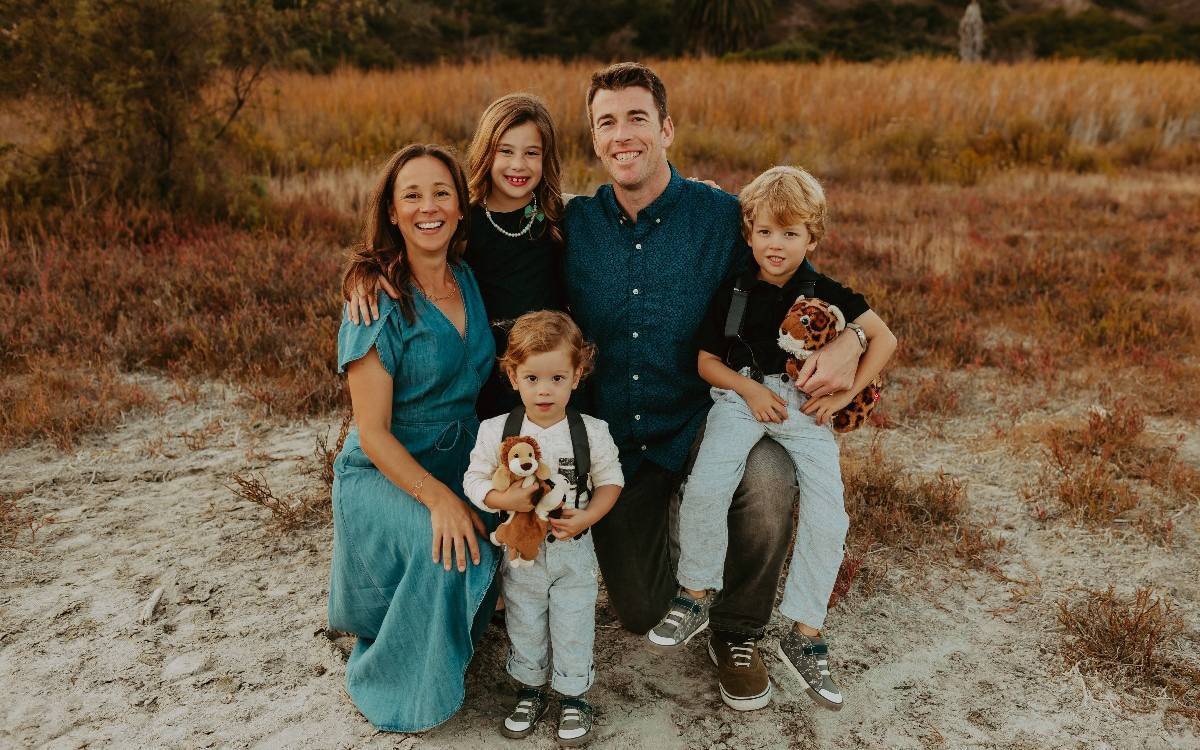
Robotic Surgery is “A Dream Come True” for Active Mom
Back to active lifestyle after robotic hysterectomy and hernia repair
Liza Wittenberg is no stranger to abdominal surgery. In her 20s, she had myomectomy surgery to remove several noncancerous fibroids from her uterus. In her 30s, she had three cesarean section deliveries. Two of those were emergencies. All three incisions were vertical.
After her second cesarean, Liza noticed a bulge near her incision. She had developed an incisional hernia in her lower pelvis. An incisional hernia occurs when a surgical cut in the abdominal wall doesn’t close properly. As a result, the abdominal muscles can weaken, which allows the intestine to push through the abdominal wall and form a hernia.
She developed another incisional hernia after her third child was born in 2017. This one was a large bulge on her belly button. In addition, a physical therapist friend determined Liza had diastasis recti, a separation of rectus abdominis muscles, which meet at the middle of the stomach.
Problems with post-pregnancy hernia
A common condition during pregnancy, diastasis recti happens when the uterus stretches the muscles in the abdomen. In most cases, the muscles heal on their own, but in Liza’s case, the combination of pregnancy, large fibroids and hernias that developed post-pregnancy prevented her muscles from rejoining naturally.
“I had two major hernias that were large bulges in my abdomen, plus a major separation of my ab muscles,” says Liza. “I couldn’t go out for a run, I couldn’t lift weights at the gym. I had terrible back pain all the time because my abs were so compromised.”
Her physical therapist recommended Liza wear an abdominal binder to help support her abdomen. It helped some, but the hernias were still debilitating.
“It was really affecting my everyday life, and I had a family with three little kids to take care of,” she recalls. “I couldn’t interact with them the way I wanted to.”
Benefits of minimally invasive robotic surgery
After her third child, Liza met with Lily Tsai, MD, an OB-GYN and minimally invasive gynecologic surgeon at Scripps Clinic Encinitas to talk about having a laparoscopic hysterectomy.
Due to Liza’s large fibroids, her uterus was the size it would be if she were four to five months pregnant, and the fibroids caused pressure symptoms. While a conventional hysterectomy would require another large abdominal incision with extended healing time, a minimally invasive laparoscopic procedure would use small incisions, reduce pain and shorten recovery time by more than half.
Dr. Tsai told Liza that not only was she a candidate for laparoscopic hysterectomy, she could probably have her hernias repaired laparoscopically as well. She referred Liza to Cheryl Olson, MD, who specializes in minimally invasive laparoscopic and robotic surgery at Scripps.
“I met with Dr. Olson and it was like a dream come true,” says Liza. “I had imagined how nice it would be to fix all of this without having to open my belly for surgery again. But I figured what were the chances that such procedures even existed and that I would be a candidate?”
Returning to active lifestyle after robotic surgery
While Liza was thrilled to learn that her hernias could be treated, she assumed that returning to her active lifestyle was probably not realistic. Dr. Olson assured her it was.
“Dr. Olson was incredible,” Liza says. “I couldn’t believe I’d be able to run and lift weights and do everything I wanted again, but she just said, ‘Yep, you will.’”
Dr. Olson did not feel it was appropriate to combine the surgeries, so Dr. Tsai performed a robotic hysterectomy in late May. Liza had five incisions between 8-10 mm each and described the surgery as “a complete breeze.”
Five weeks later, Dr. Olson performed robotic hernia surgery to repair two major hernias in separate locations and insert mesh to reinforce the abdominal wall.
“It took about eight weeks before I felt like I was healed, but considering the extent of the surgery it was par for the course,” Liza says. “I saw Dr. Olson multiple times during that period to get everything checked and make sure I was on track.”
The first time Liza went for a jog, she was amazed.
“It’s like I have that ‘corset’ again and I’m not feeling like things are falling out of my abdomen,” she says. “I feel put back together. Even though Dr. Olson assured me I’d be back to normal, I didn’t fully believe her until I felt it for myself.”
Liza says she can’t stop talking to women who have similar issues about her experience and has referred several people to both Dr. Tsai and Dr. Olson.
“I can’t say enough about how incredible this has been,” she says. “I’m so grateful to my doctors and to Scripps for doing what I thought was impossible.”
Originally posted by our partners at Scripps Health.

Join our Senior Wellness Society for the latest news on Medicare and tips for healthy living in San Diego!
Sign up now ›Are you looking for specialized medical care in San Diego?
Our directory has more than 850 doctors in San Diego County of various specialties who are available to help you.
Find a doctor